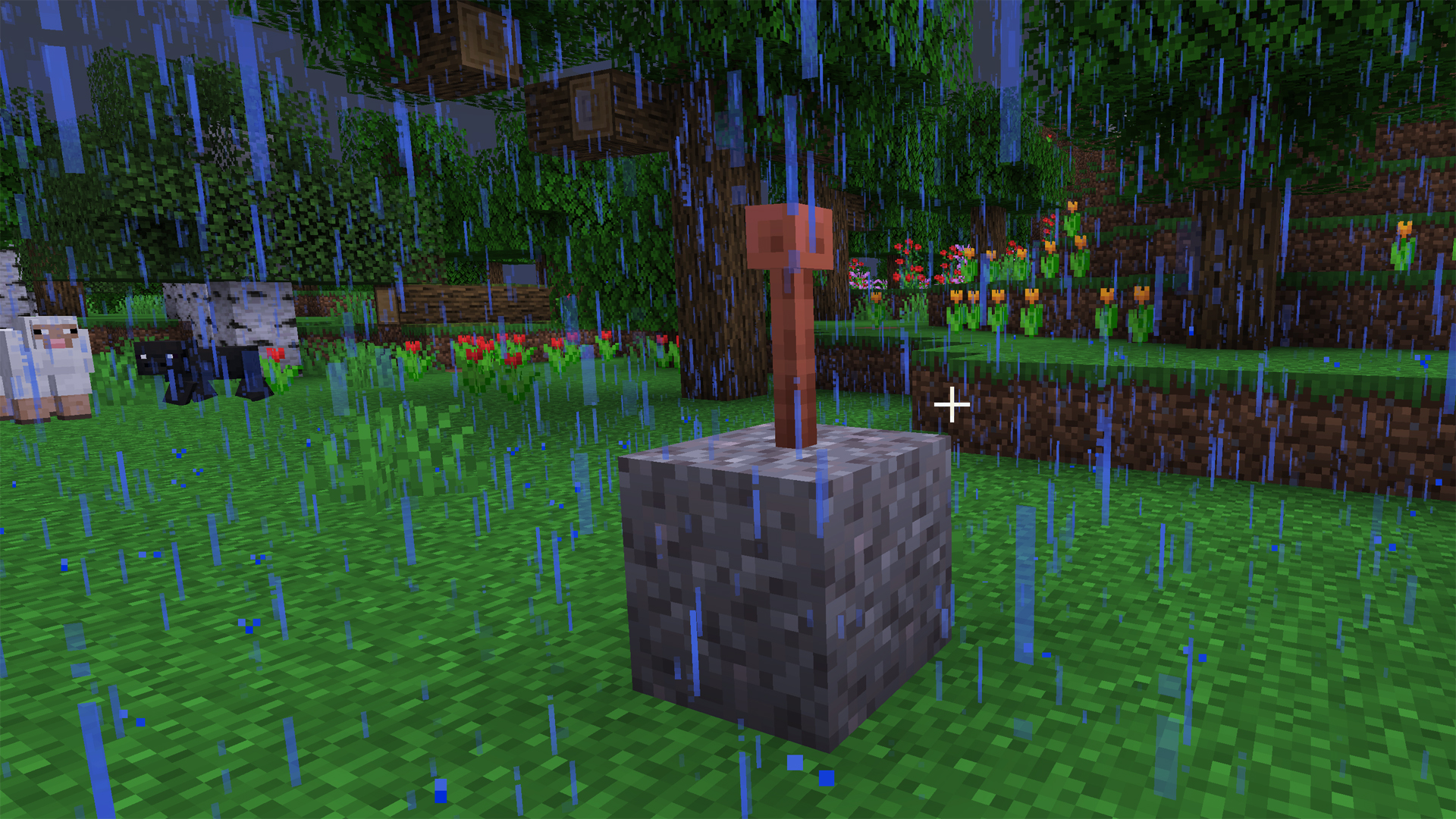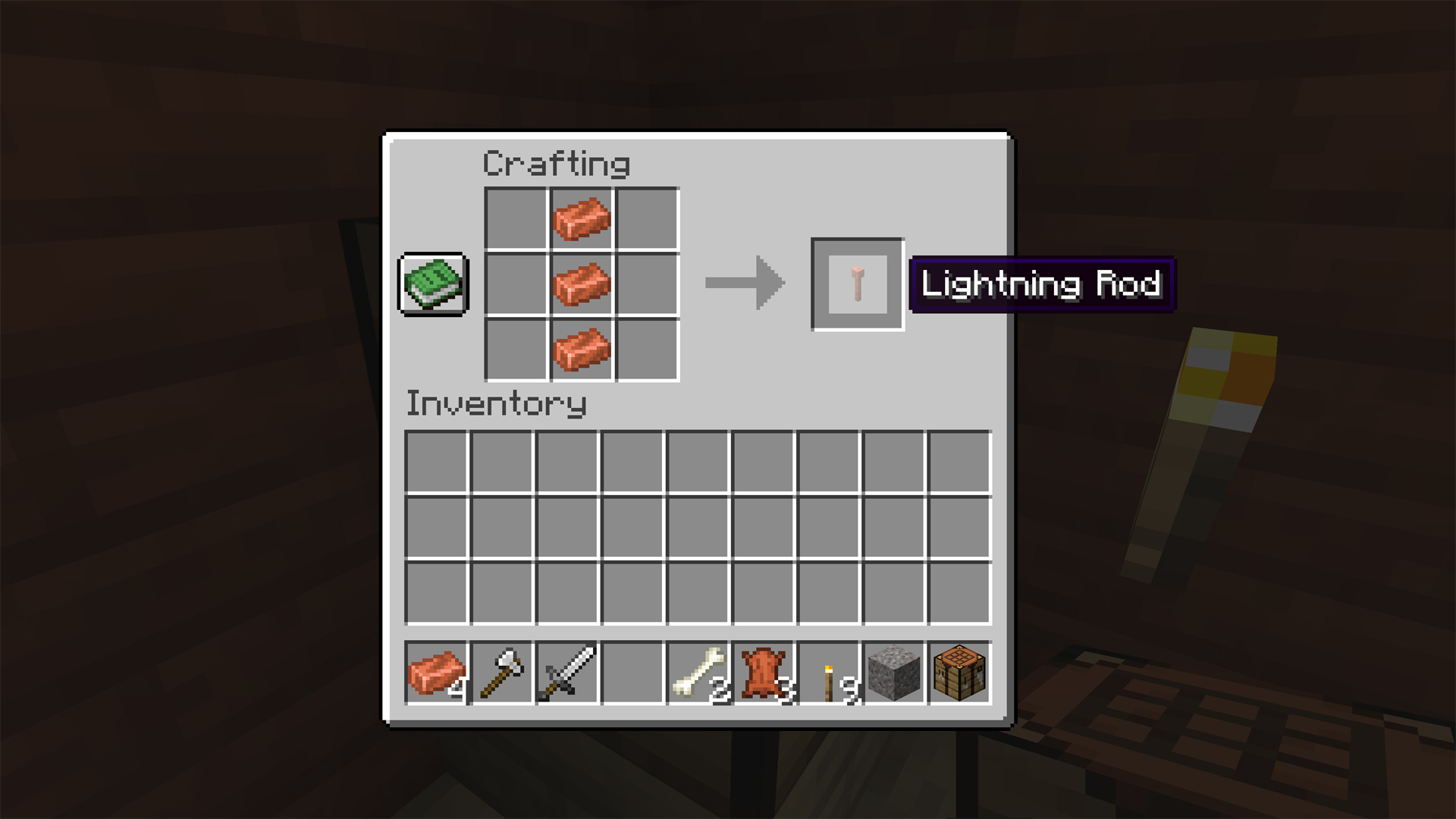How to craft the Minecraft Lightning Rod and use it
Use Copper to craft a Minecraft Lightning Rod and divert lightning

The Minecraft Lightning Rod is the best way to redirect lightning, which is not only handy if you'd like to protect a wooden Minecraft house, but also if you want to save your Villagers from turning into Witches. Keep in mind that the Minecraft Lightning Rod won't turn you into a thunder god; it doesn't spawn lightning, it only redirects incoming bolts.
Whether you're looking to de-oxidize your Copper or direct the Minecraft lightning to a specific location, here's how to craft the Minecraft Lightning Rod and how to use it.
How to craft a Lightning Rod in Minecraft

To craft a Lightning Rod in Minecraft, just place three Minecraft Copper Ingots on top of each other, which is the same shape as the Lightning Rod itself. The only difficulty you may encounter is to find Copper Ore, but if you just look at some nearby cave entrances or dig around a bit, discovering enough Copper Ore shouldn’t take too long. You can then smelt them in a furnace to get the three Copper Ingots required.
How to use the Lightning Rod in Minecraft

The Minecraft Lightning Rod can protect your wooden house from lightning strikes, but that’s definitely not the only use of the Lightning Rod in Minecraft. Here are some examples of its other functions:
- Prevent mobs from transitioning into something more dangerous. For example, a villager struck by lightning turns into a witch.
- Create mobs on purpose (and collecting their drops). Just put a pig in a tiny space with a Lightning Rod in the middle, and wait for it to be struck. It’s a bit mean, but effective.
- Remove oxidation from copper blocks. Just place the Lightning Rod on top of the copper and wait until it gets hit; the greenish color will disappear.
- The Lightning Rod sends a redstone signal when it’s struck by lightning, which means you can use it in a redstone circuit.
On top of that, watching redirected lightning strikes is also quite spectacular - especially if you're using the best Minecraft shaders.

A Minecraft Lightning Rod will divert lightning strikes, making it hit the rod instead of any other blocks surrounding it. In Minecraft Java Edition, the area covered by the Lightning Rod has a radius of 128 blocks. In Bedrock edition, it’s 64 blocks. You should mount it on a block that isn't flammable, such as stone, otherwise the base and other nearby flammable blocks could be ignited by a strike.
Naturally, a Lightning Rod won’t do anything during clear weather or normal rain. If you don't want to wait for a thunderstorm, you can change the weather using Minecraft cheats. You can tell the difference between normal rain and a thunderstorm by looking at the Lightning Rod: if it emits tiny white sparkles, lightning strikes are coming so get ready!
You can always remove your Lightning Rod and place it elsewhere, but make sure to use a stone or better quality pickaxe to remove a Lightning Rod, otherwise it won’t drop anything.
Minecraft Lightning Rods are a handy tool, but you can get more handy tools by mastering Minecraft enchantments.
© GamesRadar+. Not to be reproduced without permission
Weekly digests, tales from the communities you love, and more
I’m a freelance journalist who (surprise!) kind of has a thing for videogames. When I’m not working on guides for GamesRadar, you can probably find me somewhere in Teyvat, Novigrad, or Whiterun. Unless I’m feeling competitive, in which case you should try Erangel. You can also find my words on PCGamesN, Fanbyte, PCGamer, Polygon, Esports Insider, and Game Rant.



